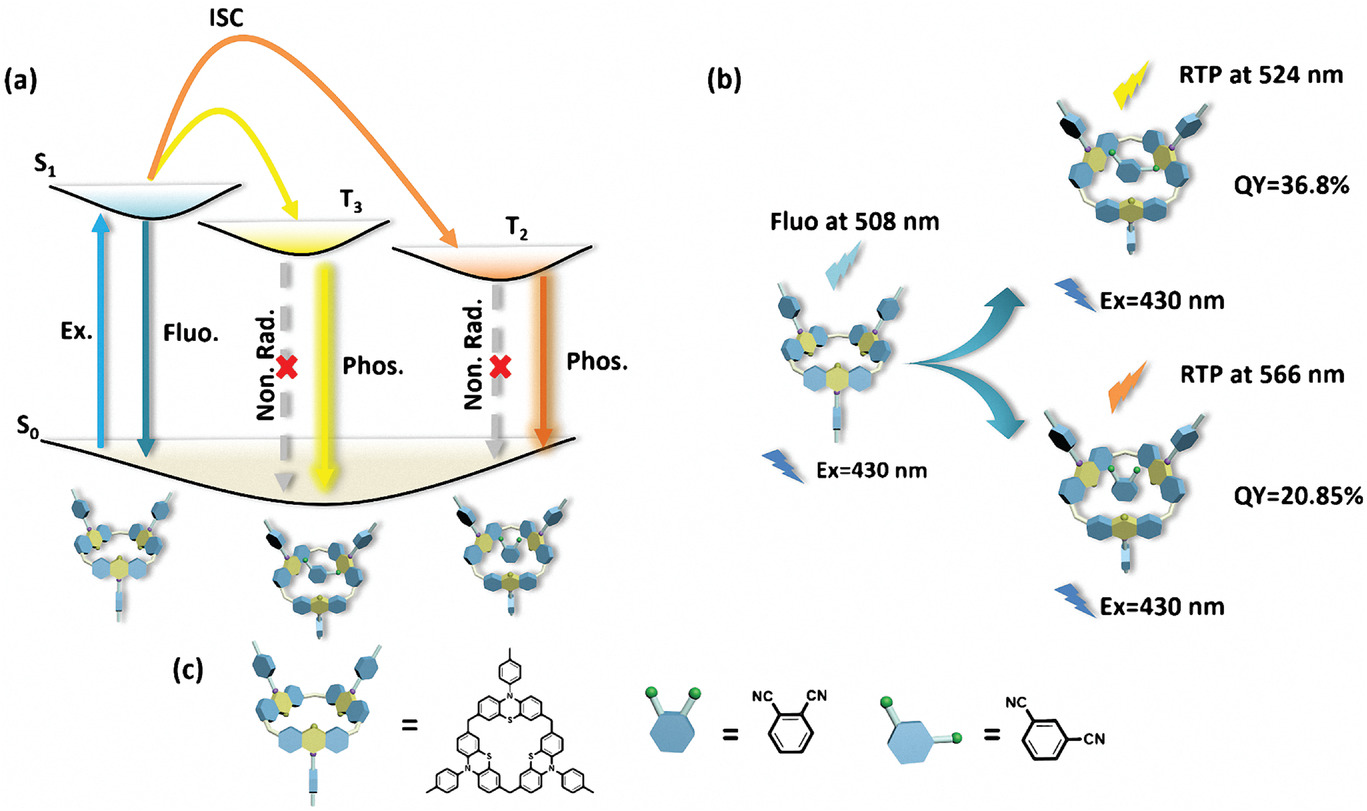Purely organic room temperature phosphorescence (RTP) has attracted extensive attention due to its great potential application in the fields of organic optoelectronic materials and bioimaging. Unlike fluorescence, organic phosphorescence is rarely achieved at room temperature. Because of the inefficient spin-orbit coupling (SOC) of pure organic molecules, triplet excitons are easily deactivated through thermal vibrational and collisional processes or invasion of moisture and oxygen. Generally, to achieve high-efficiency RTP, two conditions need to be met, one is to improve the inter-system crossing efficiency, and the other is to suppress the non-radiative relaxation process.
Recently, Yu Liu’s group designed two kinds of amorphous solid-state supramolecular systems with purely organic room temperature phosphorescence from calix[3]phenothiazine (C[3]Pz) activated by 1,2-/1,3-dicyanobenzene (1,2-/1,3-DCB). Different from macrocycle-confined guest phosphorescence emission, RTP of these two amorphous solid-state supramolecular systems is entirely from the 1,2-/1,3-DCB rivetsC[3]Pzcavity to form dense supramolecular complex through CH…π interactions, leading to two different phosphorescence emissions at 566/524 nm under 430 nm excitation, respectively. AlthoughC[3]Pzshows a regular arrangement in the crystal, the vibration dissipation of the benzene ring results inC[3]Pz emitting only fluorescence at 508 nm at room temperature. 1,2-DCB and 1,3-DCB can act as molecular rivets to fix the C[3]Pz to inhibit molecular vibration so as to reduce nonradiative relaxation, which enables C[3]Pzto achieve effective RTP emission with 20.8–36.8% quantum yields. This kind of guest-activated host RTP, which is fairly rare in supramolecular systems, is successfully used for color QR codes and information encryption. Relevant achievements were published in Adv. Optical Mater., 2023, DOI: 10.1002/adom.202300326.

a) Schematic illustration of the RTP emission. b) Schematic illustration of the RTP emission of selectively activated C[3]Pz. c) Molecular structures of fluorescent guest molecule (1,2-dicyanobenzene, 1,3-dicyanobenzene) and RTP emissiveC[3]Pz.